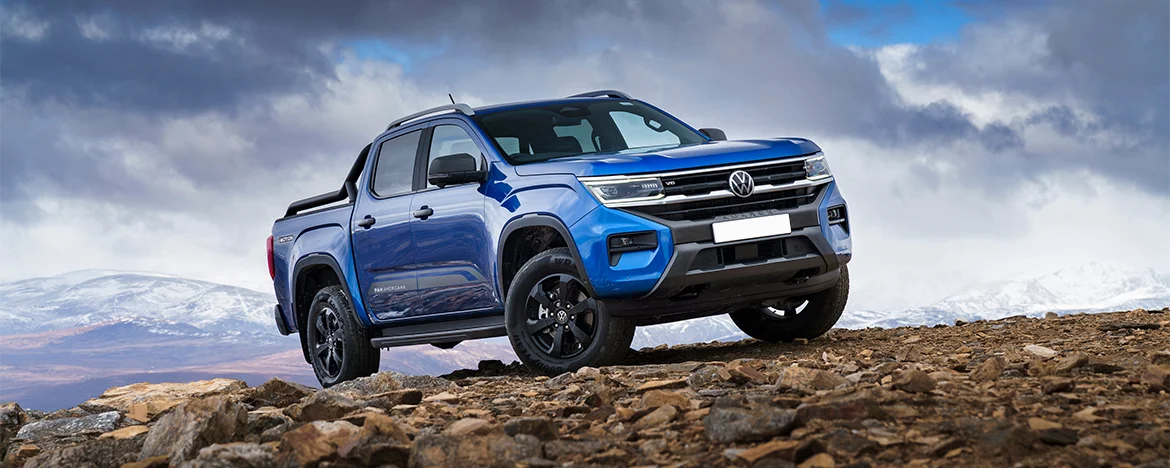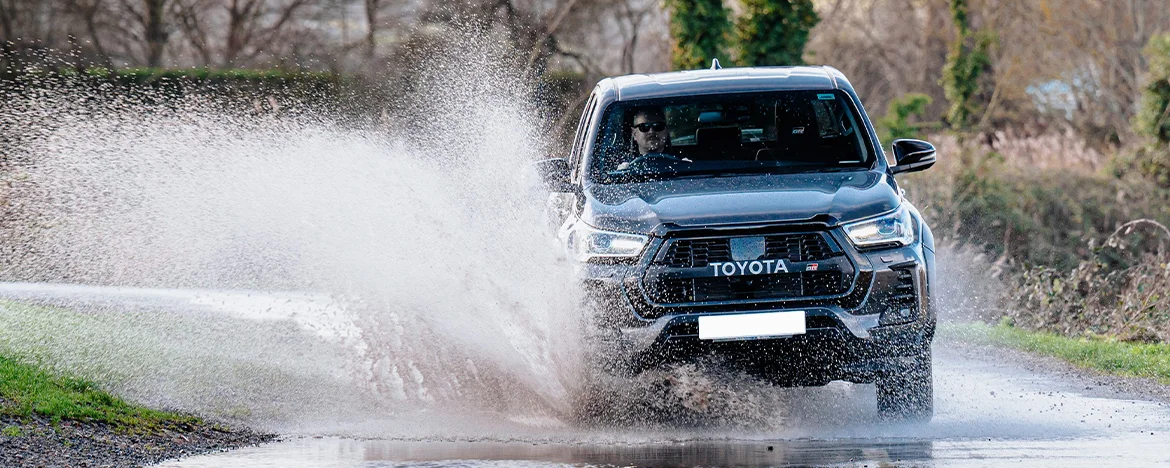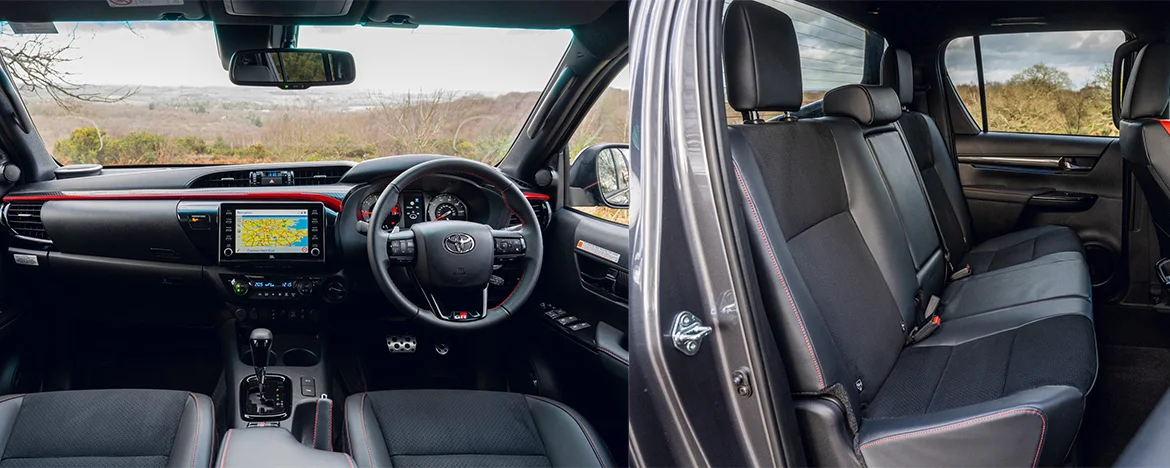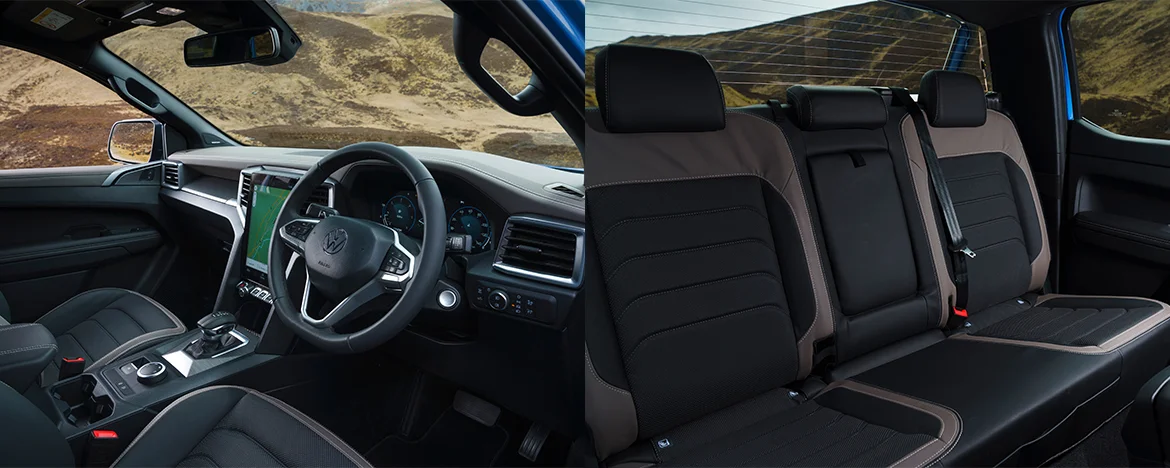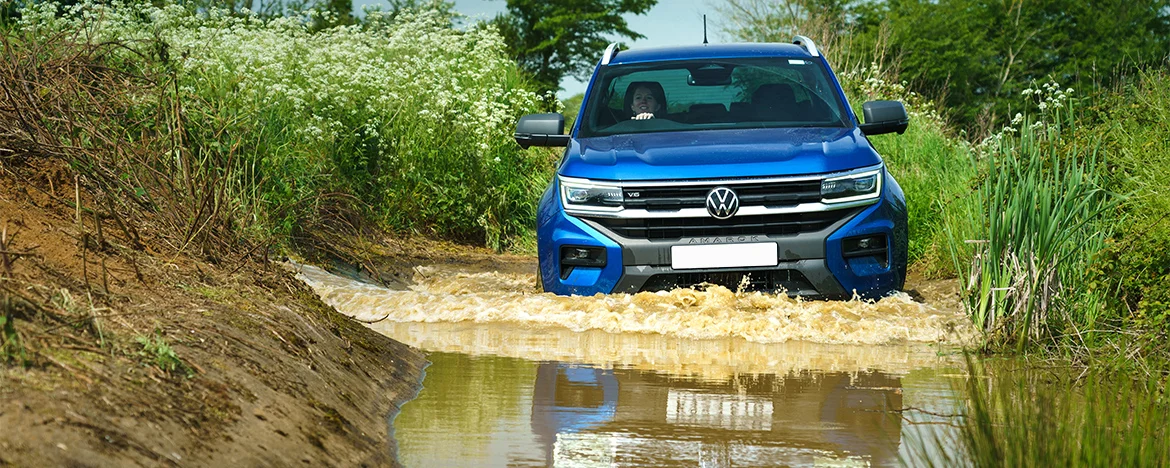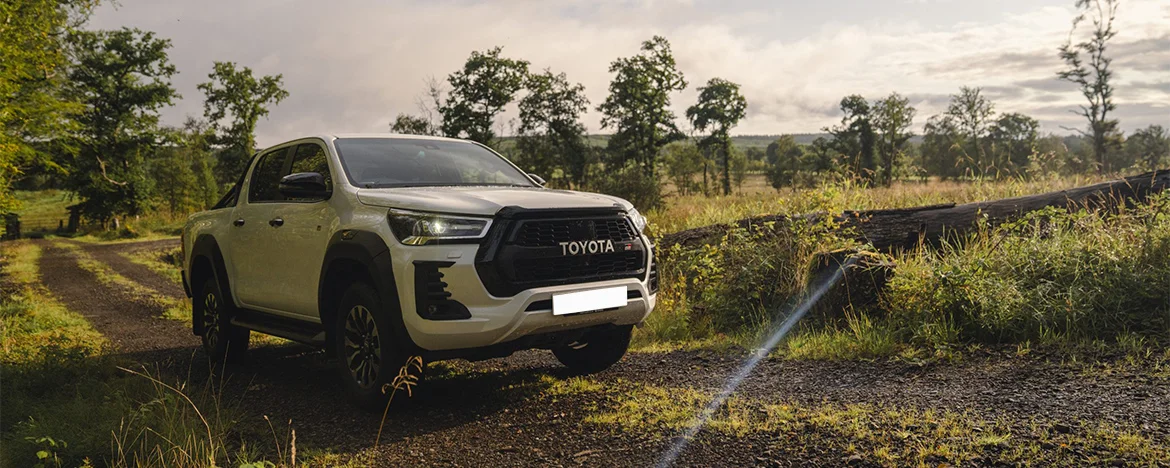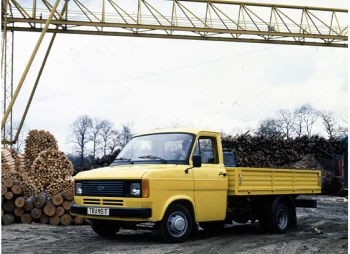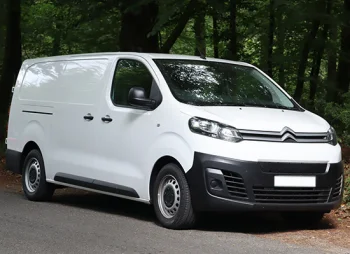Specifications
Specs for both the Amarok and the Hilux are nice and easy, though the Hilux has a little more to pick through thanks to the Single/Extra/Double Cab options.
The most basic of the Toyota Hilux line-up is the Single Cab Active 2.4, and then the specs rise through Icon, Invincible, and Invincible X, with the most expensive the Invincible X 2.8 Double Cab model.
All models but the entry-level Active get the 8in touchscreen, while standard across the board is automatic service reminders, e-call and remote diagnostic functionality, as well as the usual air con and heating.
Step up a bit, and you’ll benefit from a panoramic view monitor, auto-dimming rearview mirror and dual-zone air con, while the most expensive Hilux’s also get heated leather seats, an automatic gearbox, JBL hi-fi and LED lights.
The VW Amarok also has four trim levels to pick from.
Life is the most basic Amarok on offer, with 17in alloy wheels, LED lights, rear-view camera. adaptive cruise control, and a 10in infotainment screen. Step up to Style, and you’ll get the larger 12in screen, plus 360-degree camera and additional active safety systems.
PanAmericana is the next trim level, and it’s designed to be more suited to off-roading. It gets chunkier styling features and a premium leather interior, while the top-of-the-range Aventura gets lots of chrome accents, massive tyres and extra tech.
There is also a whole range of accessories on offer to complement your pickup lifestyle, including a bike holder, a hardtop for the cargo bed, and even snorkels.
Both pickups get a five-year warranty and five years of roadside assistance, while VW will cover five services for the Amarok, and Toyota will knock 50% off the servicing labour bill if it takes more than seven days.
Which, being a Toyota, it probably won’t.
The Hilux will likely survive the apocalypse, if and when it comes. Stick a years’ worth of tins in the back and you’ll be good to ride out the first wave.

